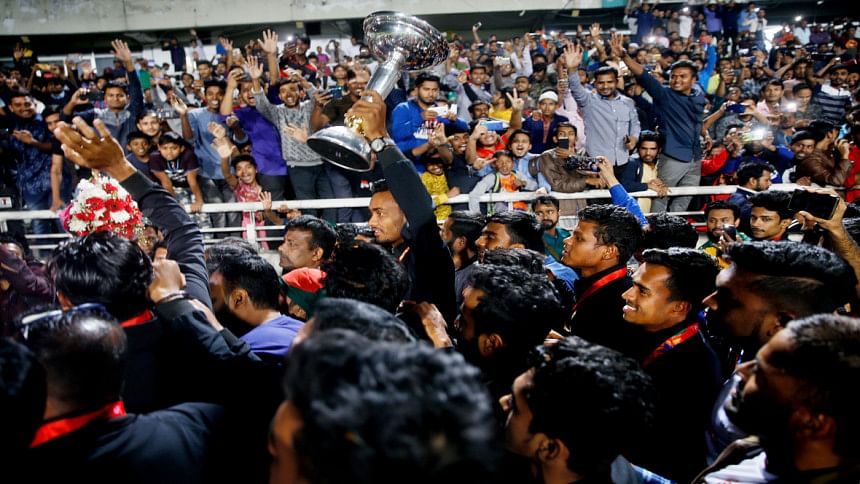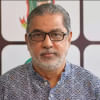Bangladesh’s U-19 obsession and its consequence

Which of these two countries are more successful in age-level cricket, India or Bangladesh?
This question may seem redundant at first, given that India are the most successful team in the ICC U-19 World Cups, with five title wins compared to Bangladesh's one.
India's dominance in the ACC U-19 Asia Cup is also undeniable, having won seven out of the nine editions while the young Tigers have won it just once in last year's December in Dubai.
India's win percentage in Youth ODIs, 76.25, is also the best in the world, much better than Bangladesh's 58.12. However, Bangladesh can still claim to be more successful than their cricketing giant neighbours in age-level cricket in one parameter.
Unlike international cricket, where winning is the be-all and end-all, the main goal of age-level cricket is to unearth and then nurture young cricketers who can later go on to represent the country at the senior level.
And in that metric, Bangladesh have India beat by a country mile.
Till 2022, 163 different cricketers have played for Bangladesh in U-19 World Cups. Out of them, 78 have gone on to play for the Tigers in at least one format.
Percentage-wise, Bangladesh have a success rate of 47.85 in turning age-level cricketers into senior national team players, meaning almost one out of every two cricketers have made it to the international stage.
India, on the other hand, have had 162 cricketers represent the country at the U-19 World Cup since 1998, out of which 41 have played for the senior team.
India's conversion rate is 25.31 percent, which means only one out of four U-19 cricketers were able to make the jump to the senior team.
Not just India, Bangladesh are unmatched in the cricketing world in terms of churning out international cricketers out of U-19 players.
From just the last three U-19 World Cups, which also includes the championship-winning batch of 2020, 18 cricketers have received the Bangladesh cap.
India, who have won two titles and finished as runners-up once in the last three editions, have given international debuts to seven U-19 cricketers from those batches.
Other top cricket countries like Australia and England have been even more selective about handing out debuts to U-19 players, calling up only two and four cricketers respectively into the national team from those three batches.
This gulf between Bangladesh and other top cricketing sides could mean one out of two things.
Either, Bangladesh continuously discovers incredible talents at age-level cricket who are ready for the trials and tribulations of international cricket right as they enter their 20s.
Or, more likely, the cricket authorities in the country have little to no faith in the standard of the country's domestic circuit and are singling out age-level cricketers who they think could develop into an international-level cricketer and fast-tracking their inclusion in the national team in hopes of accelerating their development.
This tendency of fast-tracking age-level cricketers into the national team is nothing new in Bangladesh.
From handing a Test debut to an 18-year-old Mushfiqur Rahim at Lord's in 2005, a year before he played in the Under-19 World Cup, to roping in Tanzim Hasan Sakib into last year's ICC ODI World Cup squad after him taking part in consecutive U-19 World Cups, examples of thrusting untested young cricketers into the big stage are a dime a dozen in Bangladesh cricket.
But plucking a talented young cricketer and throwing him at the deep end has its risks as the heightened competition at the senior level could prove too much for him.
Also, not going through the grind of First Class and List-A cricket leaves them unprepared for the ruthless competition that awaits them on the international stage.
An age-level player from Bangladesh, who had shown tremendous promise but is yet to live up to his potential is Anamul Haque.
The wicketkeeper-batter finished as the highest run-getter in the 2012 edition of the U-19 World Cup with 365 runs and made his international debut that very year.
An unfortunate injury, failure to grab onto opportunities and the apparent flaws in his game which have persisted from the very beginning have kept him from fulfilling his promise.
Pakistan's talisman Babar Azam was part of that same Under-19 World Cup, had made 78 runs fewer than Anamul to finish second in the run-getters' list and had to wait another three years to play his first international match.
But that wait, where he had to ground it out with experienced cricketers at the first-class level helped him mature as a cricketer and it enabled him to deal with the ebbs and flows of international cricket, something Anamul and many like him in Bangladesh often do not get.
In about two weeks, another group of Bangladeshi teenagers will begin their campaign in the ICC Under-19 World Cup 2024 in Bloemfontein on January 20 against India.
The Mahfuzur Rahman Rabby-led side have gone to South Africa with hopes of doubling Bangladesh's trophy count in the tournament.
Bangladesh, a country that hardly tastes success in sports at any level, will surely burst into celebration if they go on to win the trophy.
But for the sake of the country's cricket, the authorities need to refrain from jumping the gun with these young players and stunting their growth as cricketers.
Because in the long run, the careers of these young cricketers could prove to be much more valuable for Bangladesh cricket than an age-level trophy.

 For all latest news, follow The Daily Star's Google News channel.
For all latest news, follow The Daily Star's Google News channel. 









Comments